Belgian Open history
Almost all the best players in the history of wheelchair tennis have come to the Belgian Open since its creation… in 1988! That year, Anne Desonay and Martine Verachtert set off on a crazy project: to establish a tennis club for disabled. “Les Deux Rebonds” are created with the help of an organization called “ADEPS” and the club settles in Woluwé-Saint-Pierre, Brussels. But Anne and Martine had further plans in their head.
The International Open of Belgium is born at the same time as “Les Deux Rebonds” and experienced a very successful beginning: 60 players participated in the first year! The tournament occured in the Forêt de Soignes that year but quickly moved to “Les Eglantiers” in 1990.
The first big consecration occured in 1992 with the organization of the wheelchair tennis World Cup. Not less than 130 players rolled in that year to battle for the title. Jim Courier, n°1 in the world in tennis at that time, specially travelled from the United States to admire the show and to cheer on the players. Laurent Giammartini and Monique Kalman were the winners of this edition.
But after the sun came the rain. The number of attenders dropped and Woluwé-Saint-Lambert and “Les Eglantiers” decided to stop the organization of the tournament after 1993. Two former chairmen of the tournament, Raymond Dombrechts and André Verhulst, took over and establish the tournament in Géronsart, its current place. But the facilities weren’t adapted and the access to the club-house for the players wasn’t easy. So the organizers decided to put a lateral lift that had an awfully noisy motor. This idea was abandoned two years later and a 30m long ramp was set up. It’s since been used until 2016.
The tournament then became better and better while it also became more and more professional. The first newspaper of the Belgian Open is created in 1996 under the name of “Belgian Open News”. It’s was and still is written in French, English and Dutch!
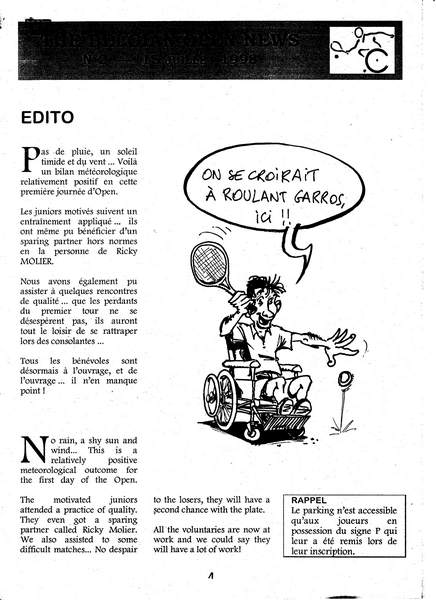
The traditional exhibition matches also appeared and already gathered a lot of spectators. Belgian former n°1 Justine Hénin and Belgian former top30 Olivier Rochus both came in 1997 to especially play with Esther Vergeer, filling two tribunes. Steve Darcis, Christophe Rochus and Kristof Vliegen would follow in next editions. 120 players came and fought for the title that year. The success-story is on track again.
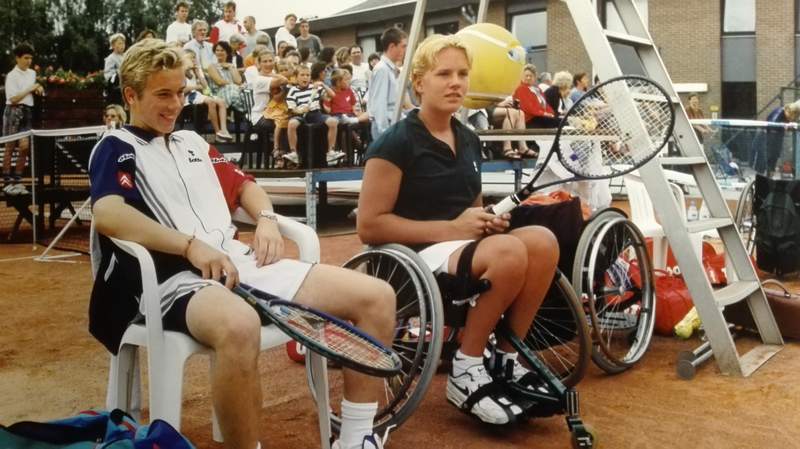
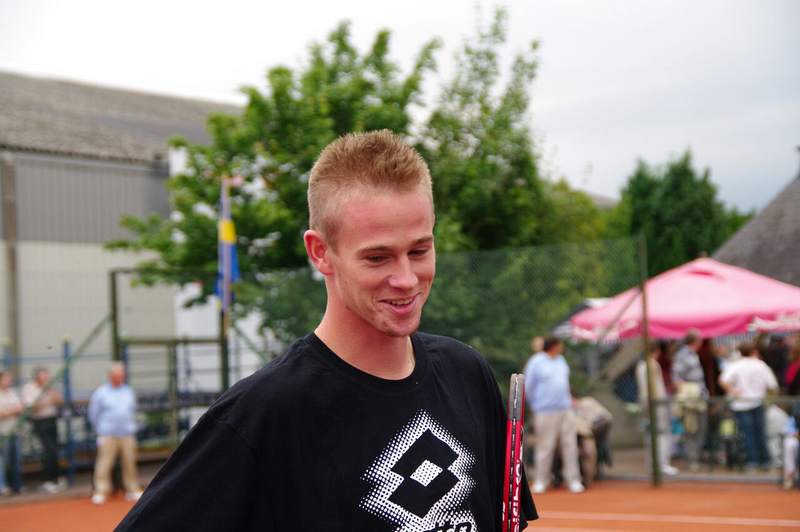
Justine Hénin attended the exhibition in 1999 again and would even be our “godmother” for 2000 and 2001. 2000 also represented the graduation year of our (now former-) director Scott McInnes. A graduation he enjoyed a little bit too much with all the people of the tournament as… corks of Champagne were found stomped in the courts the next morning, oops!
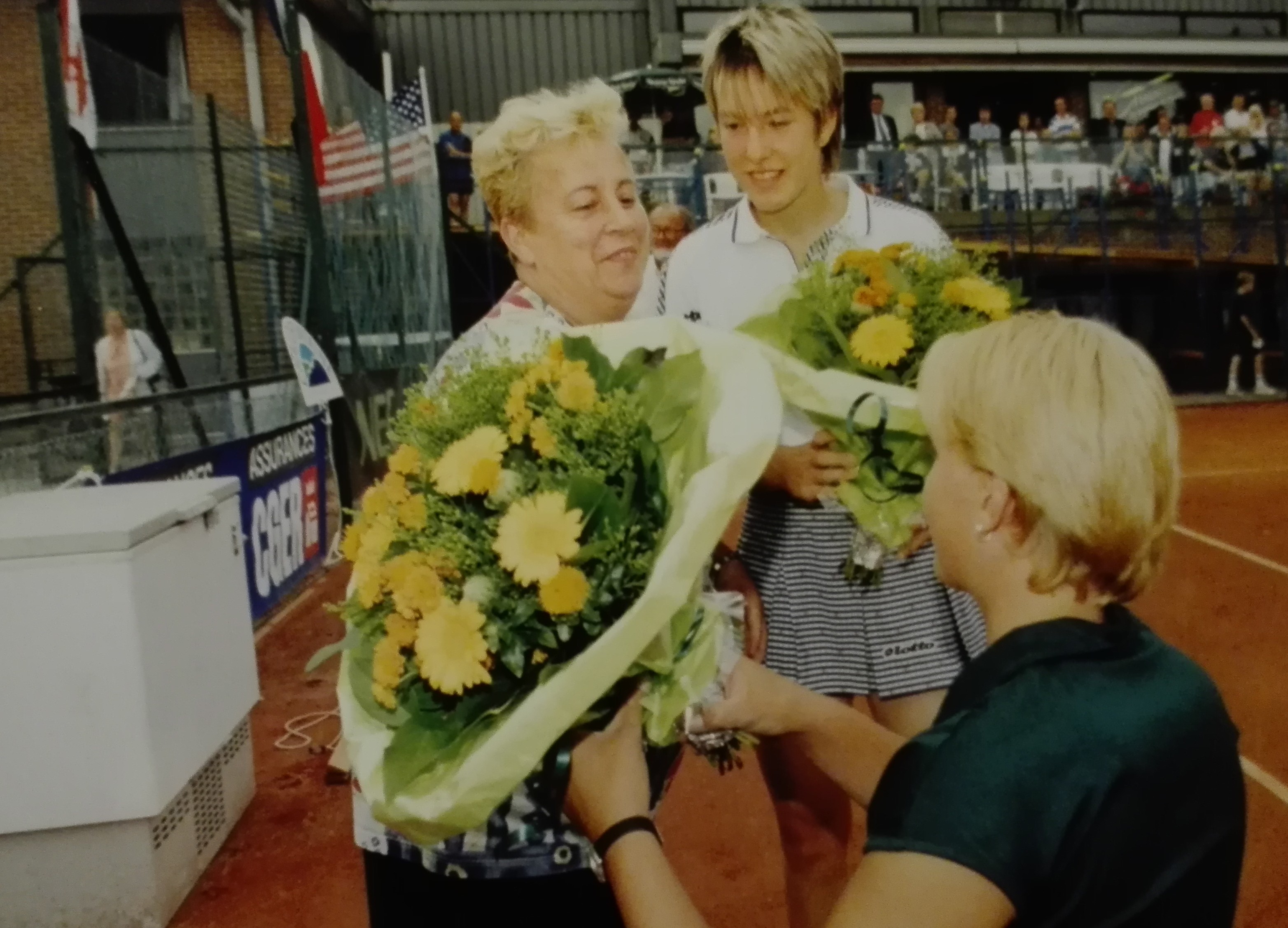
2001 was a special year as it was the first attendance of our now leading Belgian player Joachim Gérard while Mike Denayer wins his first match. The prize-money at that time amounted to $15,000... While it currently is $30,000.
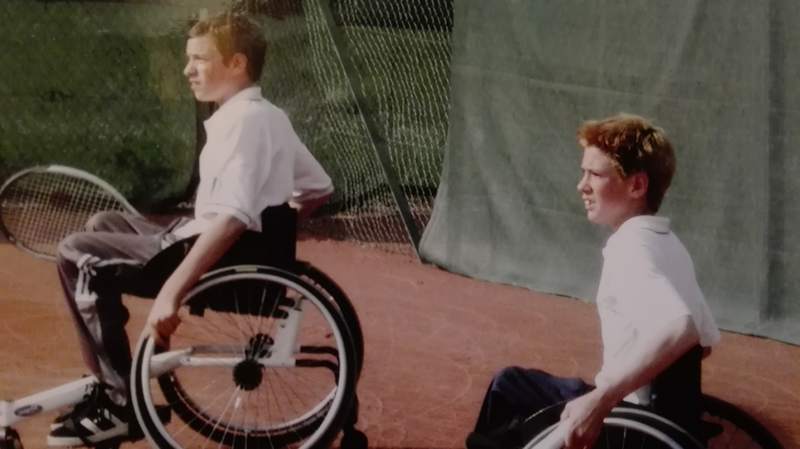
Scott McInnes became our director in 2004, taking over from Raymond Dombrechts. Although Scott has been involved in the tournament since its first year: first as a chairman and then in the organizing committee. With him at the head of the tournament, the number of players often reached more than 100 and the Saturday nights became particularly festive. Indeed, the committee made it a habit to bring the players along to a nightclub close to the area called the “Flagrant Delire”. No need to say the nightclub’s party-goers were surprised to see this group coming and dancing with their wheelchairs!
.jpg)
2006 was another particular year as numerous matches have to be delayed due to… the heat wave! The extreme temperatures that year forced the organizers to suspend the matches during the day to preserve player's health. Quite unusual in our rainy Belgium.
Some years also saw some incredible performances occurring and… coming to an end. Esther Vergeer won the Belgian Open for the tenth time in a row in 2008. A performance that reflects her incredible talent. She put an end to her career a few months later, while staying unbeaten for ten years.
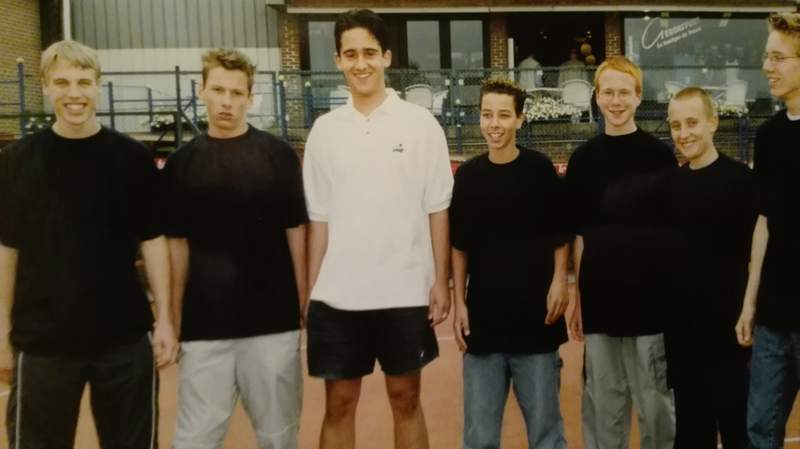
Twelve years after its first attendance, Joachim Gérard reached his first Belgian Open final in 2013. He was defeated by young Argentinian Gustavo Fernandez. That year is also marked by another incredible record: David Wagner won, as Esther Vergeer did a few years earlier, his tenth Belgian Open in a row in the quads category.
2014 represents another acknowledgement for the tournament as the newly set organizing committee wins the “Namur citizen of the year” trophy in the sport category.
What follows is successes and numerous projects that still remain on our minds. The Belgian Open welcomed former-world n°9 Dominique Monami for the exhibition in 2015 and former-world n°1 table tennis player Jean-Michel Saive in 2016. The number of spectators increases, the wheelchair tennis becomes more professional and the level of the matches becomes more and more incredible year after year. All of this give us strength and raises our ambitions to always achieve a higher goal and always offer you a higher quality tournament!
In 2018, after his fifth title in Jambes, Gustavo Fernandez, then n°1 in the world, claimed that "the Belgian Open is the most professionnal tournament of the tour". The Belgian Open therefore sets itself as an unavoidable tournament of the year for the players. Beside its level of professionnalization, it is also one of the tournaments that attracts the most spectators: no less than 4,500 people in 2018 and 2019.
While the 2020 and 2021 had to be cancelled because of the coronavirus pandemic, the tournament is back in 2022. In 2023, it is the last edition held in Géronsart, after almost thirty years in Namur.
From 2025 onwards, the tournament will be back and moved to Enghien/Edingen, on the linguistic border. This Hainaut club is 100% accessible to wheelchairs and ready to host Belgium's biggest wheelchair tennis tournament...




 Partager ce contenu
Partager ce contenu